New Horizons team pieces together the best images they have of Pluto's far side
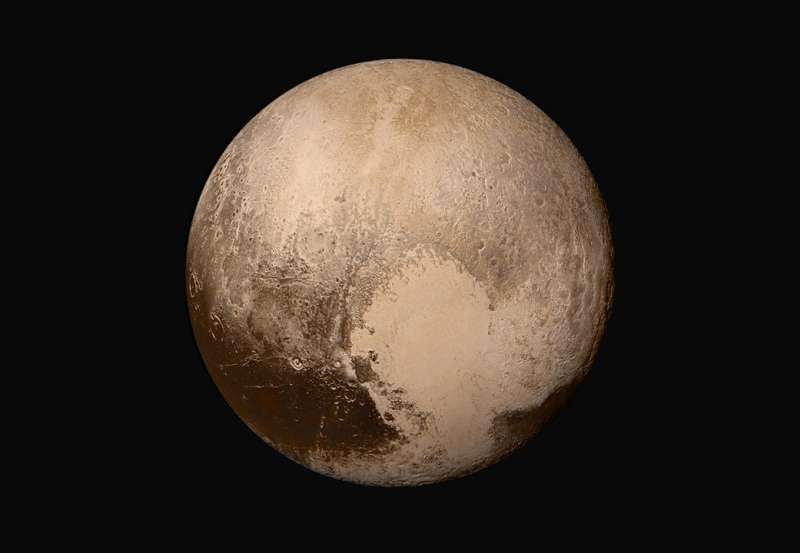
Pluto was discovered in 1930 by astronomer Clyde Tombaugh. For decades, not much detail was known about the erstwhile planet. We assumed it was a frozen, dormant world.
Once the Hubble Telescope was operational, we started to become more acquainted with Pluto. We discovered that Pluto has moons, although their planet-moon arrangement is unusual. Then, in 2006, the International Astronomical Union (IAU) redefined what planet means, and Pluto was relegated to dwarf planet status (ice dwarf planet, to be exact).
After years of trying to understand Pluto with the Hubble, NASA's New Horizons mission was launched. The New Horizons spacecraft arrived at Pluto in the summer of 2015, making its closest approach on July 14th, 2015. New Horizons was a game-changer when it comes to our understanding of Pluto and its moons.
New Horizons' cameras gave us high-resolution images of Pluto that were far more detailed than Hubble images. And those images cover a lot of the surface of Pluto. But New Horizons was traveling quickly, at 50,700 kilometers per hour (31,500 miles per hour). Since Pluto's length of day is longer than six Earth days, New Horizons was gone before the far side came into close-range view. It never entered orbit around Pluto.
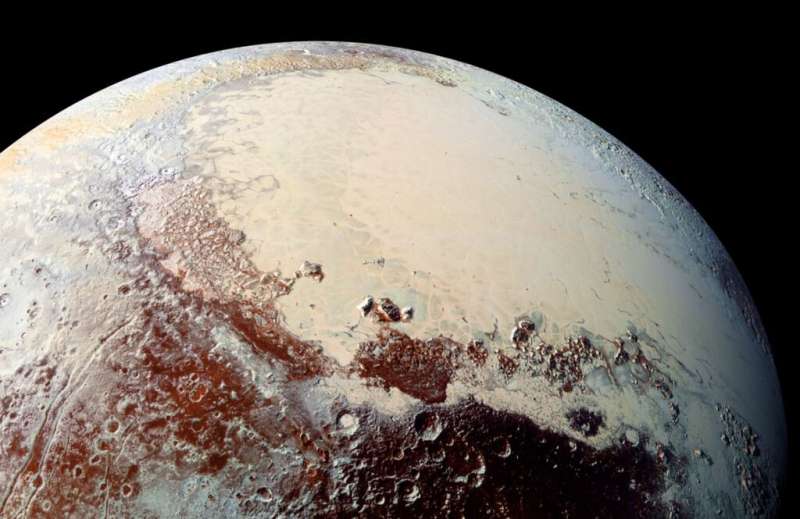
As a result, the best images of Pluto are of what's called the "encounter hemisphere." That's the side of Pluto that contains Sputnik Planitia, and that doesn't face Pluto's moon Charon. (Pluto and Charon are tidally locked to one another.)
The relative dearth of high-resolution images from Pluto's far side has frustrated scientists. There are images from New Horizons' approach to Pluto, they're just not as high-resolution as the images from the encounter side, since the spacecraft was further away when that side of Pluto was visible.
A new study called "Pluto's Far Side" looks at Pluto's non-encounter side, and tries to create an integrated understanding of the terrain and features there. The study's authors come from a variety of institutions, including the Lunar and Planetary Institute, the NASA Ames Research Center, and Johns Hopkins University. The first author is Alan Stern of the Southwest Research Institute.
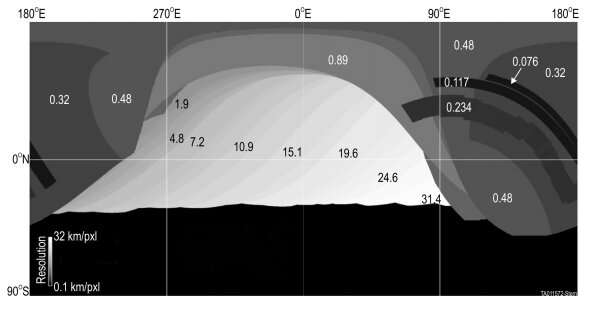
New Horizons has a suite of instruments on board, including the Long Range Reconnaissance Imager (LORRI) and the Multispectral Visual Imaging Camera (MVIC.) Those instruments gave us the high resolution view of Pluto's encounter side that we've all enjoyed. New Horizons was much further away when it captured images of Pluto's far side, but it still gave us much better images than we had before.
The study shows that the encounter side of Pluto is quite a bit different from the far side. The encounter side is dominated by a feature called Sputnik Planitia, an ice-covered, high-albedo basin. The far side has nothing like it.
In other ways, both sides are similar. New Horizons found features called "bladed terrains" on the encounter side's eastern regions. These same features, which are vertical shards of methane ice up to 300 meters (1000 feet) tall, were found on the far side, too. In fact, they seem to be widespread on Pluto, and are found across half the planet's surface.
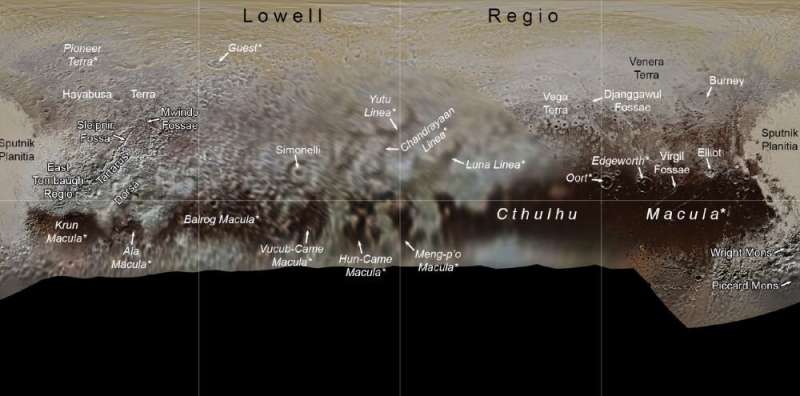
Scientists think that Pluto's bladed terrain features form in a way similar to the penitentes features found in the Chilean Andes. Those features are formed when snow sublimates. However, penitentes are much smaller and only reach a height of about five meters (16 feet.).
The authors of the new paper point out the difficulty in characterizing those features due to the low resolution of the images. In the paper, they say, "…unit characterization for the FS [far side] must be based primarily on albedo variations seen in low-phase approach imaging, somewhat aided by interpretation from near side images." It helps that New Horizons took images of Pluto as it eclipsed the sun, revealing the planet's limb, and the research team used these images to infer the altitude of features on the far side.
The new research also shows a region on Pluto's far side that's full of dark blotches and intersecting lines. The team of researchers was able to characterize this region with the help of the far side images themselves, but also by examining the features on the opposite side of the planet. In this case, the blotches and intersecting lines are opposite the prominent Sputnik Planitia feature.
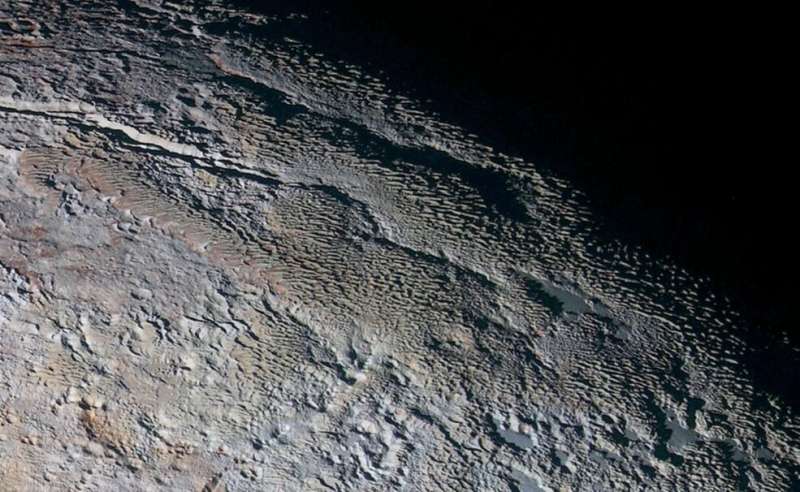
Sputnik Planitia may be an impact crater, and that impact would've sent shockwaves around the dwarf planet that might have created the region of dark features and linear features on the opposite side. Mercury has a similar situation, where the Caloris Basin, one of the largest impact craters in the solar system, lies directly opposite what's called Mercury's "weird terrain." The weird terrain has linear features much like Pluto's far side, and may have been formed when the Caloris Basin impact sent shockwaves around Mercury, meeting up on the opposite side.
These results are only a tantalizing taste of Pluto's far side. As the authors say in their paper, "Future progress on far-side geology, geophysics and compositional studies would benefit tremendously from a Pluto orbiter."
There are questions about the ice dwarf that only an orbiter can answer:
-
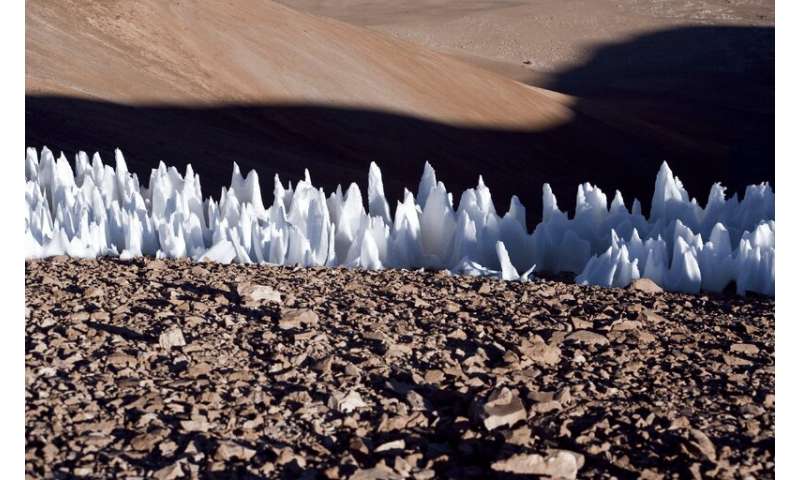
An example of the penitentes from the southern end of the Chajnantor plain in Chile. Though these ice formations only reach a few feet in height, while Pluto’s bladed terrain reaches hundreds of feet, they both have similar sharp ridges and form through sublimation and erosion. Credits: Wikimedia Commons/ESO -
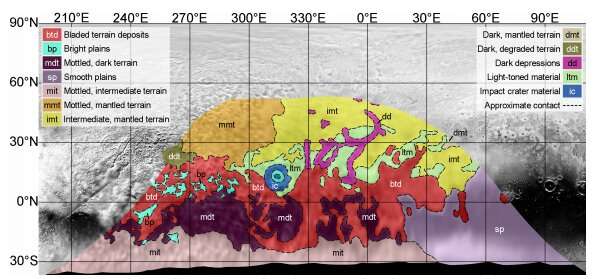
Geological map of Pluto’s far side showing geological units identified by analysis of New Horizons imaging, spectral, and limb topography data. Credit: NASA/New Horizons/S. A. Stern et al., 2019 -
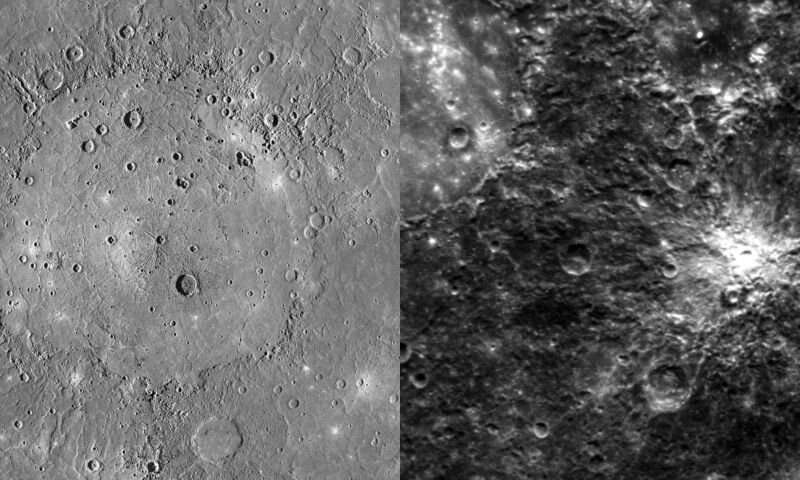
Mercury’s Caloris impact basin and “weird terrain” The Caloris impact event sent shockwaves around Mercury that likely created the weird terrain on the opposite side. Scientists think the same thing happened with Pluto’s Sputnik Planitia. Image Credit: Left: NASA/Messenger. Right: NASA/JHUAPL/CIW -
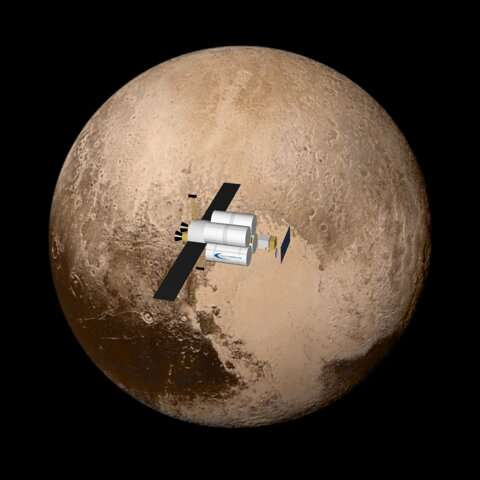
An illustration of the conceptual Fusion-Enabled Pluto Orbiter and Lander at Pluto. Credit: Princeton Satellite Systems, NASA/JHUAPL/SwRI
- What is the global distribution of Pluto's volatile units, and how does this relate to Pluto's climatic history?
- What is the nature of Pluto's great ridge-trough system (RTS), and is it truly global?
- How did Sputnik Planitia form, and did its formation play a significant role in shaping the far side geology of Pluto?
There's some talk of sending an orbiter to Pluto, though the authors say such a mission is at least two decades away. But one proposal could cut that time down.
The Fusion-Enabled Pluto Orbiter and Lander was a 2017 proposal funded by NASA that suggested that a direct fusion drive (DFD) could send a 1,000 kg. (2200 lb.) orbiter to Pluto in only four years travel time, which is more than twice as fast as New Horizons. DFDs are being developed, but we don't have them yet.
In the nearer term, it's up to the next generation of telescopes being built to give us a better look at Pluto. These telescopes, like the 30 Meter Telescope and the Giant Magellan Telescope, will give us views of the ice dwarf planet at much greater resolution the Hubble has.
Source Universe Today





















